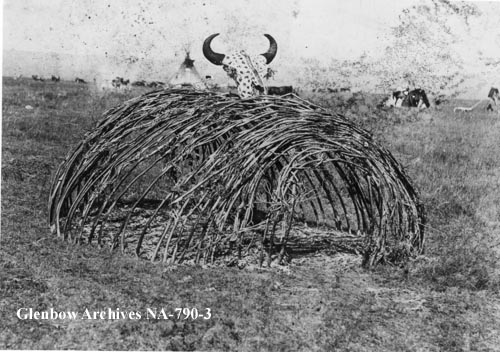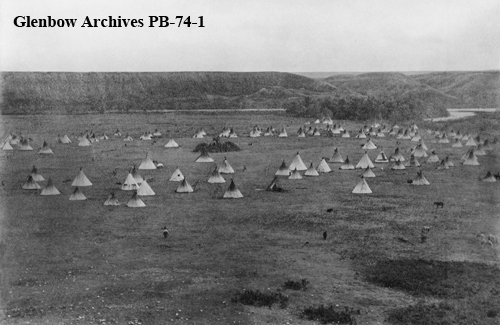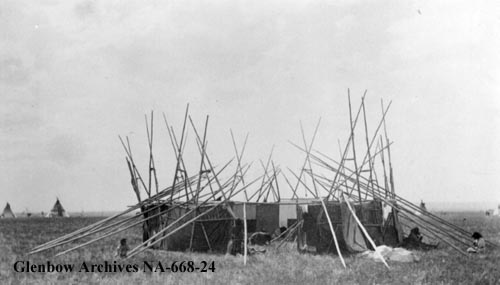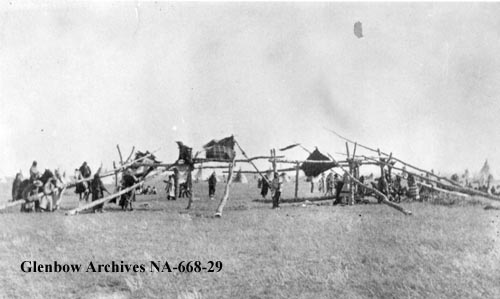The Sun Dance is an annual sacred celebration practised by many Plains Indigenous groups. Traditionally, the Sun Dance was performed at midsummer when various bands congregated at a predetermined site. The ceremony lasts between four and eight days and is usually arranged by a spiritual leader. The reasons to host a Sun Dance vary and can include reaffirming spiritual beliefs, celebrating the renewal of life, anticipating good growing seasons, fostering a safe community, encouraging good health, and so on.

While ceremonies can change from band to band and region to region, there are similar elements to each event. Participants will typically begin with a Sweat Lodge Ceremony before constructing the sacred Sun Dance lodge. The lodge is always built in a circle with the entrance facing east, signifying the coming of light. The host of the Sun Dance will have already chosen the centre pole, which will be transported to the site by a selected group of males. The pole cannot touch the ground until it is erected in the centre of the lodge.

Dancer will typically fast from food and water and are susceptible to weather and the elements. Participants can dance for days and this can be a gruelling ordeal for them. The Sun Dance is a physical and spiritual test that dancers offer as a sacrifice for their people. Many of the songs chosen to be used during the Sun Dance are passed down through generations. The use of a traditional drum, a sacred fire, and praying using a ceremonial pipe are other common practices that are utilized during the ceremony. Sometimes the ceremonial piercing of the skin is included as part of the dance. In these instances, the chest is pierced and attached to the central pole while participants dance around it. In the end, participants in the Sun Dance are offering a personal sacrifice for the greater good of their family and broader community. At the conclusion of the dance, participants will engage in a tradition feast. The Sun Dance site is left to time and weather for dismantling.

When the Indian Act was introduced in 1895, many Indigenous spiritual and cultural practices were banned, including the Sun Dance. While some groups ignored the ban and continued participating in ceremonies, the pass system, which prevented large groups of Indigenous people from gathering together, made the dances difficult. Amendments to the Indian Act in 1951 no longer prohibited the Sun Dance celebration. The Sun Dance is still a common event for many prairie-based Indigenous groups to this day.

Typically, photos or videos are not allowed during these ceremonies, but if you’d like to visit a historical dance site there are a couple close to Calgary. One is in the Highwood Pass area and is mentioned in this previous story called, History in the Highwood. The other is near Sibbald Lake, although the structures have now all fallen down there too. If you do visit, please show these important cultural sites the respect they’re due and leave everything as you found it.


















The photos above were collected from the Glenbow Archives. If you’re interested, additional information can be found for each photograph on the Glenbow website by searching the identification number that is printed on the photo. There is also the option to purchase a high resolution copy. Stay tuned for additional posts featuring historical photos from across Alberta. We’d love to know what you think on social media.




